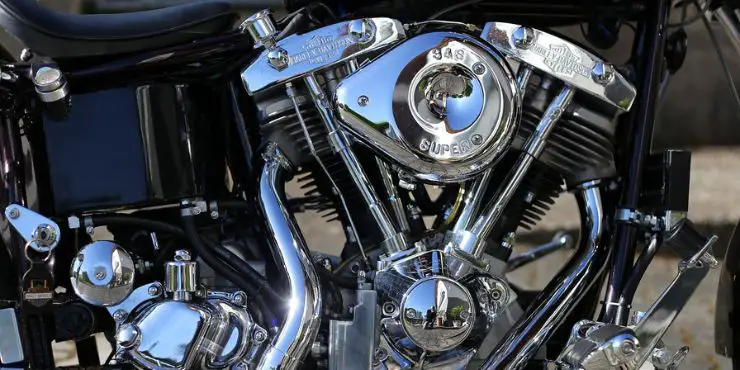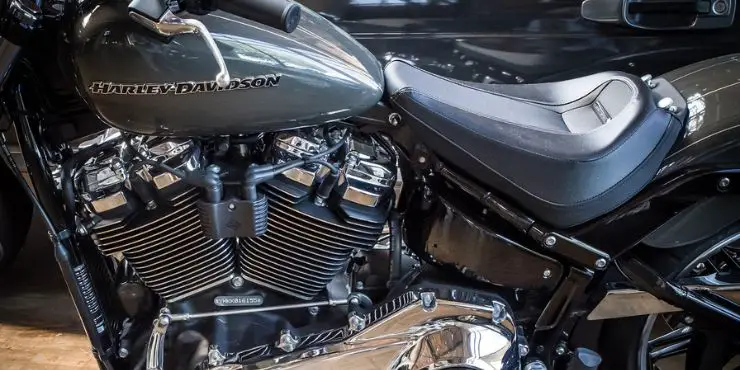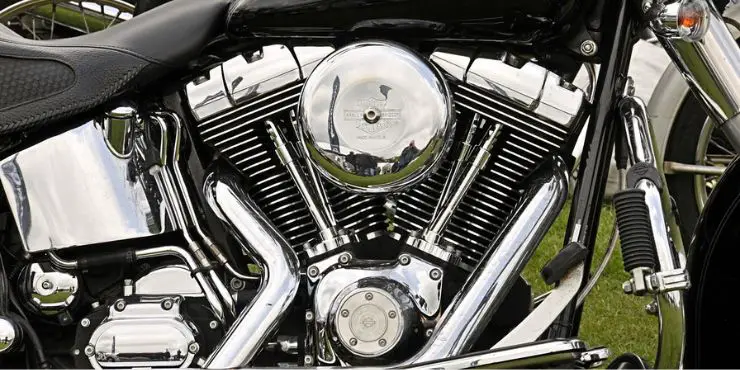Do you own a Harley-Davidson bike, and you’re curious about the exact number of cylinders in your motorcycle? If so, then you’re definitely in the right place.
Harley-Davidson motorcycles typically have two cylinders, arranged in a V-twin configuration, which is a hallmark of the brand’s engine design.
In this article, you’ll get to know all about cylinders in a Harley-Davidson motorcycle, how many cylinders in a Harley-Davidson bike, different types of motorcycles according to the number of cylinders, maximizing the efficiency of engines, and more. Stick around to get all the answers that you’re looking for.
Different types of motorcycle engines
With the recent boom in the motorcycle sector, the users have become more privy to not just different types of bikes but engines too. Previously, only single-cylinder engines were commonly used in most parts of the world. The rapid increase in bike enthusiasm has led to many manufacturers introducing new varieties. With different types of engines having different numbers of cylinders, people have a wide array of options. Different types of engines ensure that your motorcycle serves its purpose, regardless of the type of Harley-Davidson bike you’re riding.
Here, you’ll get to know different types of engines available in the market, including the number of cylinders in them. Knowing this information will make it possible for you to decide the best-suited option for you.
Single cylinder engine
With a single piston delivering power for your bike, this type of engine produces a moderate amount of torque. These are used in standard street bikes and are best suited for city rides. A street bike with a single-cylinder engine will give you a comfortable and smooth ride. This engine will give you great engine performance in city traffic.
Parallel twin engine
With a dual cylinder, parallel twin engines will give you two pistons that are placed in parallel. They move in unison and produce double the amount of torque. Used in standard cruisers and low-end sports bikes for ages, this type of engine has a high performance. This type of engine is great for commuting and general riding. The common types of parallel engines include inline-triple, inline-four, and straight-six depending on the number of cylinders.
V-twin engine
One of the most powerful engines found in high-end cruising bikes is the V-twin engine. It has a dual cylinder placed in the shape of a V as the pistons follow an uneven firing order. This type of engine provides them with an attractive “burbling” exhaust sound, although at the expense of uneven power delivery. However, it makes the bike less stable through fast corners.
V-twin will provide your motorcycle with broad power and more than enough torque. The common types of V-twin engines include V4 and V8, depending on the number of cylinders.
Boxer engines
They’re commonly known as boxer engines due to the flat layout. The cylinders face their movement in a way akin to a boxer’s gloves. By moving together and apart simultaneously, this engine has long been a part of German Manufacturing.
Being a perfectly balanced engine, it is smooth and delivers torque across the entire powerband. The flat two feature the same firing rate as the parallel, but don’t actually suffer from poor natural balance. The two cylinders are moving all the time as opposed to each other. There are different types of boxer engines like Flat-Two, Flat-Four, and Flat-Six based on the number of cylinders.
How many cylinders in a Harley-Davidson bike?
The number of cylinders that a Harley-Davidson bike can have in the engine is between 1 and 6. The most used engine arrangements come with two cylinders, and it’s known as an inline configuration. Throughout the rich history of Harley-Davidson engines, there have been different configurations of engines that you can get and the number of cylinders that each type could have.
- If your bike features a single configuration engine, the number of cylinders in that engine is one
- With inline configuration, it features either 2, 3, 4, or 6 cylinders
- With V configuration, the engine has anywhere between 2, 3, 4, 5, and 6 engines
- With L configuration, the number of cylinders in this type of engine includes 2, 3, or 4
- For flat configuration, the engine will be getting either 2, 3, 4, or 6 cylinders
Why do different Harley-Davidson bikes have a different number of cylinders?
Most high-end bikes have more cylinders to deliver better performance and to sound better. While single-cylinder engines are easier to work with and deliver incredible power at low engine speeds, they don’t actually work well at high engine speeds. Single-cylinder engines are used on dirtbikes and bikes that aren’t meant for highways. This type of engine is easier to maintain and cost-effective.
Engines having two or more cylinders can deliver more power overall due to the firing rate. They have different configurations and deliver power at certain engine speeds. Interestingly, you’ll be able to tell which type of engine it is merely by listening to it.

Maximizing the efficiency of engines in Harley-Davidson bikes
Assuming that an engine is designed for optimizing cylinder fill, the combustion process, ring seal, and scavenging become key in producing power. Improving combustion efficiency will be important to optimize power. A decent combustion chamber design can optimize thermal and combustion efficiencies. An engine having optimized combustion efficiency can be identified by improved fuel efficiency, crisp throttle response, and low brake-specific fuel combustion.
A combustion chamber that is relatively flat or dished piston top and centrally located spark plug offers short, unobstructed flame travel and rapid combustion. Moreover, a large, tight squish band will be essential for proper turbulence. High turbulence mixes the air/fuel mixture into a homogenous mixture that burns more quickly and efficiently. It’ll also need less ignition advance or lower-octave fuel and be a lot less prone to detonation and pre-ignition.
An optimum squish clearance will vary depending on the engine components and the use of the bike. Generally, the tighter, the better, but it shouldn’t be so tight that it impedes combustion. Additionally, the piston shouldn’t be allowed to touch the head during engine operation. Cylinder, rod, crankcase, and piston expansion need to be considered as the engine warms to operating temperature. An engine with aluminum cylinders will have tighter squish clearance compared to iron-cylinder engines. This happens as aluminum expands far more than iron. Some factory crate engines come measured with as much as 0.072-inch squish clearance, which is a lot.
With aluminum cylinders on an engine, the tightest clearance recommended will be between 0.030-inch and 0.040-inch. For iron cylinders, the figure is recommended to be 0.040-inch. Race engines come built to close tolerances and can be set up with less squish clearance. However, they’re on a trial-and-error basis, and you’ll need to pay close attention to what you’re doing and closely monitor the engine.
For a piston, crankcase, rod, and stroke, the squish clearance can be juggled by changing the cylinder length, cylinder base, or thickness. Squish clearance cannot actually be changed by milling the head if the squish band is located between the head’s head-gasket surface and the top of the piston. However, combustion chamber design can easily change this. For instance, if the squish band is between the piston dome and the combustion chamber like the Shovelhead and modified heads, milling the head could easily reduce squish clearance.
Since cylinder pressure and maximum cylinder fill occur near peak-torque RPM, the peak-torque power numbers drop down first with a poor-selling pump. Straight, round, and rigid cylinders, accurately machined piston ring grooves, and ring/cylinder wall finish compatibility are important for achieving a proper ring seal.

The compression ratio is an important factor for power reduction, detonation tolerance, and efficiency. More compression improves power throughout the engine’s RPM range, which results in snappier acceleration and increases fuel mileage. This happens as the engine is more efficiently converting energy into power. Once the limits of detonation reach for a given fuel octane and combustion changer design, so will the realistic limits of compression. Detonation is uncontrolled, spontaneous, and potentially disastrous combustion in the combustion chamber. If an engine is on the edge of detonation, merely insulating the fuel line with household copper water pipe insulation could eliminate the detonation.
Conclusion
Thank you for reading. Hopefully, now you know a lot more about cylinders in a Harley-Davidson motorcycle, how many cylinders in a Harley-Davidson bike, different types of motorcycles according to the number of cylinders, maximizing the efficiency of engines, and more. The exact number of cylinders in a Harley-Davidson motorcycle ranges from one to six. The most common number of cylinders in a Harley-Davidson bike is 2, and they’re generally in inline, flat, or V-configuration. However, Harley-Davidson motorcycle engines could have between 1 and 6 cylinders, depending on the model and type of motorcycle.

